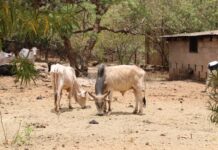|
Getting your Trinity Audio player ready...
|
By Lenah Bosibori
Nairobi, Kenya: Illegal trade in endangered species and wildlife poaching in developing countries has shifted gears to online marketing a new study has revealed.
The Global Initiative study on how digital is changing the landscape of organized crimes reveals that the world’s major social-networking and e-commerce platforms as key sites for unimpeded illegal activity.
“The availability of online connections and trading platforms has driven demand across a widening base of consumers and changed the ways in which wildlife-trading networks operate and frustrated the efforts of traditional law enforcement approaches.” Says the study published in June.
According to the study, illicit wildlife goods are therefore widely advertised on publicly available forums.
Further, it reveals that digitally-enabled trade is a major and growing part of the international market, and is widely documented to According to the study, looking to the future illegal trade is a major threat to global biodiversity and natural resources.
It further reveals that expanding internet access in key source countries for illegally traded species countries such as Indonesia for trade in endangered reptile and parrot and China for ivory and rhino horn indicates that the role of technology will only continue to increase in importance.
Further, the study says that although growing attention is being paid to the issue signaled, most notably, by the Global Coalition to End Wildlife Trafficking Online, there appears to have been no real progress in limiting these markets.
“Current dynamics of the online illegal wildlife trade although online markets in illegal wildlife products vary greatly, wildlife trade is conducted almost exclusively on the surface web.” According to the study.
While this may include the use of private channels and groups, it appears that the risk of law-enforcement involvement in these markets is not high enough to force illegal wildlife traders to sacrifice the marketing opportunities offered to them by the open web and to mask their activities more effectively on the dark web.
“Trade in endangered species is routinely carried out on major social networking platforms including Facebook, Instagram, and WhatsApp and e-commerce platforms, such as eBay.” Says the study.
These platforms feature prominently in reporting on the illegal wildlife trade in places as diverse as Indonesia, the UAE, Pakistan, Brazil, and Madagascar.
This goes against the stated policies of these platforms, which prohibit users from engaging in illegal trade, and the pledges made by these companies to counter illegal trade through their sites, all of which suggests that their policies are not being enforced effectively.
“Our own research in Indonesia highlighted national platforms, such as Kaskus, Ceriwis, and Carousell, as key sites for trade in endangered parrot species, Illegal online trade is, therefore, a product of broader demand and not limited solely to major social-media and e-commerce platforms.”
Online illicit wildlife markets are heterogeneous, ranging from small collector networks to substantial supply-chain arrangements for certain products.
The different trading dynamics offered by online trading have given rise to new ways of conducting illegal trade practices. The prevalence of sole traders rather than cohesive organized-crime groups is the most prominent shift in modus operandi that has been observed.
“Our case studies emphasized the rising role of ‘agents’ in social-media-based trade; people who are able to monetize the advertising of wildlife products using their own social networks and act as intermediaries in the sales process.” According to the study.
The barriers to entry into the illegal wildlife trade have been lowered through the introduction of digital technology, and online marketplaces have enabled both new traders and consumers to enter the illegal wildlife trade with greater ease.
Social networks facilitate transnational connections between would-be wildlife dealers and international suppliers, allowing individuals without previous links to the wildlife trade to establish themselves quickly within the market.
For consumers, the open advertising of wildlife products online enables the participation of the casual buyer, who otherwise would not actively seek out a specialist offline market; the open nature of trade destigmatizes the activity and reduces the extent to which it is perceived as a ‘real crime’.
Connections made over social media enable criminal players and poachers within species’ source regions to communicate and advertise with ease to consumers internationally.
Due to the growing volume of internet facilitated trade, the capacity for proactive, manual monitoring of environmental markets is stretched even in well-resourced law-enforcement agencies.
As online trade continues to grow, proactive monitoring will soon become unfeasible unless costly technological monitoring systems can be developed and systematically incorporated into enforcement efforts.
Law-enforcement agencies around the world are faced with a huge strain on resources, and as a result, few law-enforcement agencies can justify applying scarce resources to problems that do not affect humans
Although source countries have a greater incentive to combat online IWT, they also generally have far fewer resources with which to do so.














